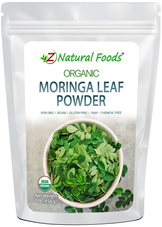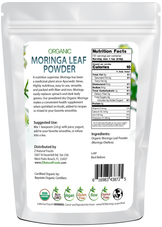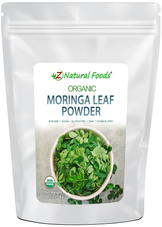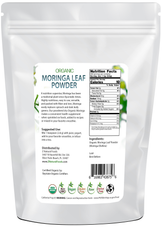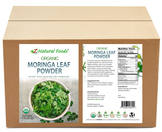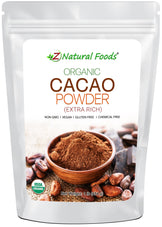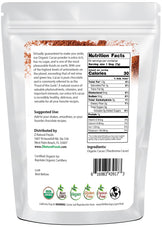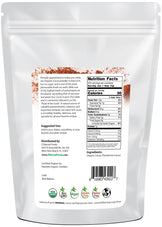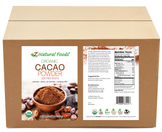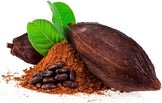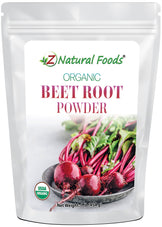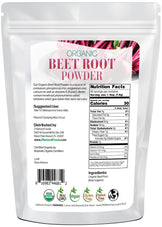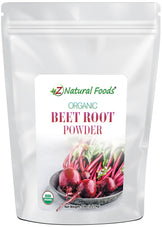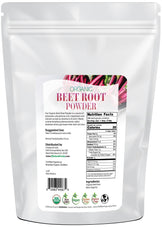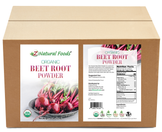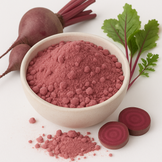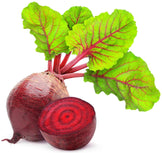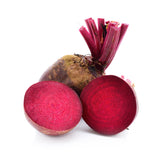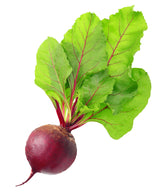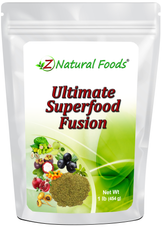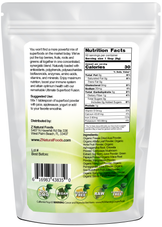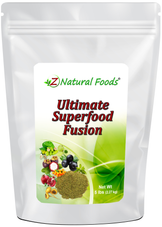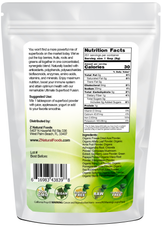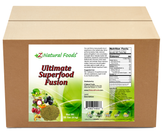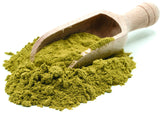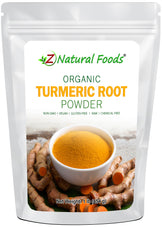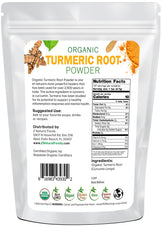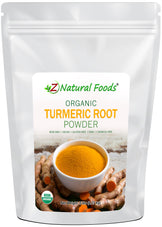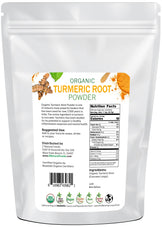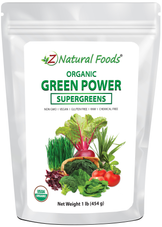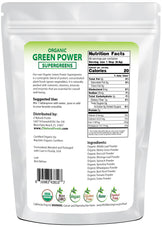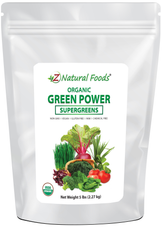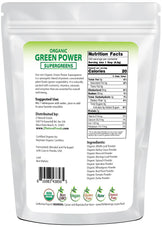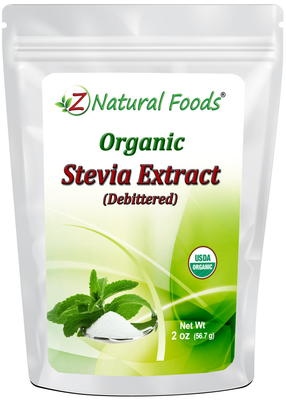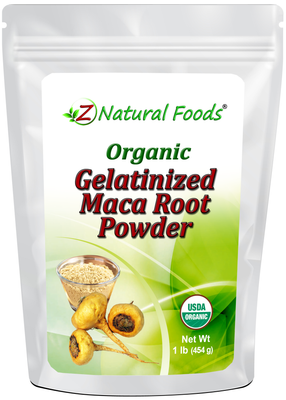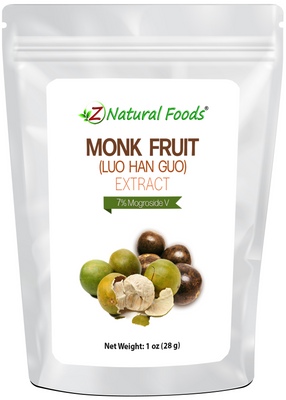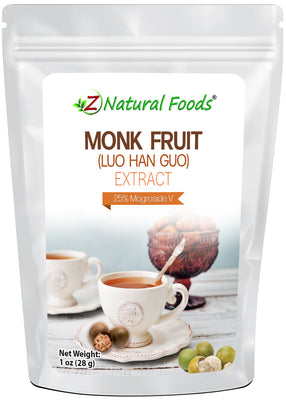About Product
Green Coffee Bean Extract Powder is made from raw, unroasted coffee beans that are carefully processed to preserve their natural character. With a mild, earthy flavor and smooth texture, this fine powder blends easily into smoothies, teas, or other beverages.
Convenient and shelf-stable, it offers a unique alternative to traditional roasted coffee. Its subtle taste makes it a versatile ingredient for drinks and recipes where a gentler coffee note is desired.
Some research suggests that Green Coffee Beans may contain the following constituents:
- Phytochemicals: Polysaccharides, Lignins, Pectin, Trigonelline, Diterpenes, Acids and esters, Chlorogenic acids, Aliphatic acids, Quinic acid
This product is 100% natural and minimally processed. Taste, smell, texture, color, and caffeine content may vary from batch to batch.
Suggested Use: Mix 1/4 teaspoon (0.7g) with juice or water 30 minutes before each meal. One gram of Green Coffee Bean Extract naturally contains 40 mg of caffeine, equivalent to about half a cup of coffee.
Botanical Name: Coffea Arabica L.
Other Names: Arabica Green Coffee Beans, Cafe Marchand, Cafe Verde, Cafe Vert, Coffea arabica, Coffea arnoldiana, Coffea bukobensis, Coffea canephora, Coffea liberica, Coffea robusta, Extrait de Cafe Vert, GCBE, GCE, Green Coffee Beans, Green Coffee Bean Extract, Green Coffee Extract, Green Coffee Powder, Poudre de Cafe Vert, Raw Coffee, Raw Coffee Extract, Robusta Green Coffee Beans,
Parts Used: Green Coffee Beans.
Ingredients: Green Coffee Bean Extract.
Origin: Grown and extracted in India and packaged with care in Florida, USA.
How to Maintain Optimum Freshness
- This product is packaged in airtight stand-up, resealable foil pouches for optimum freshness.
- Once opened, push the air out of the pouch before resealing it to preserve maximum potency.
- Keep your powder in a cool, dark, dry place.
This product is 100% natural and minimally processed:
Taste, smell, texture, and color vary from batch to batch. Go here to learn why our products may naturally vary.
The important protections we take to bring you safe and nutritious superfoods:
Please go here to discover the essential steps we take to deliver fresh, quality nutrition.
Bulk Quantities?
Need to order a large quantity of our products? We are happy to help! Please get in touch with our Bulk department to discuss the details.
* Product packaging, pictures, and origin may vary.
Sources & References
1. Freedman ND, Park Y, Abnet CC, Hollenbeck AR, Sinha R. Association of coffee drinking with total and cause-specific mortality. N Engl J Med. 2012 May 17;366(20):1891-904.
2. Arion, W. J., Canfield, W. K., Ramos, F. C., Schindler, P. W., Burger, H. J., Hemmerle, H., Schubert, G., Below, P., and Herling, A. W. Chlorogenic acid and hydroxynitrobenzaldehyde: new inhibitors of hepatic glucose 6-phosphatase. Arch.Biochem.Biophys. 3-15-1997;339(2):315-322.
3. Herling, A. W., Burger, H. J., Schwab, D., Hemmerle, H., Below, P., and Schubert, G. Pharmacodynamic profile of a novel inhibitor of the hepatic glucose-6-phosphatase system. Am.J.Physiol 1998;274(6 Pt 1):G1087-G1093.
4. Higdon, J. V. and Frei, B. Coffee and health: a review of recent human research. Crit Rev.Food Sci.Nutr. 2006;46(2):101-123.
5. Olthof, M. R., Hollman, P. C., Zock, P. L., and Katan, M. B. Consumption of high doses of chlorogenic acid, present in coffee, or of black tea increases plasma total homocysteine concentrations in humans. Am.J.Clin.Nutr. 2001;73(3):532-538.
6. Hu, G., Jousilahti, P., Nissinen, A., Bidel, S., Antikainen, R., and Tuomilehto, J. Coffee consumption and the incidence of antihypertensive drug treatment in Finnish men and women. Am.J.Clin.Nutr. 2007;86(2):457-464.
7. Greenberg, J. A., Boozer, C. N., and Geliebter, A. Coffee, diabetes, and weight control. Am.J.Clin.Nutr. 2006;84(4):682-693.
8. Suzuki, A., Fujii, A., Yamamoto, N., Yamamoto, M., Ohminami, H., Kameyama, A., Shibuya, Y., Nishizawa, Y., Tokimitsu, I., and Saito, I. Improvement of hypertension and vascular dysfunction by hydroxyhydroquinone-free coffee in a genetic model of hypertension. FEBS Lett. 4-17-2006;580(9):2317-2322.
9. Suzuki, A., Fujii, A., Jokura, H., Tokimitsu, I., Hase, T., and Saito, I. Hydroxyhydroquinone interferes with the chlorogenic acid-induced restoration of endothelial function in spontaneously hypertensive rats. Am.J.Hypertens. 2008;21(1):23-27.
10. Yamaguchi, T., Chikama, A., Mori, K., Watanabe, T., Shioya, Y., Katsuragi, Y., and Tokimitsu, I.Hydroxyhydroquinone-free coffee: a double-blind, randomized controlled dose-response study of blood pressure. Nutr.Metab Cardiovasc.Dis. 2008;18(6):408-414.
11. Suzuki, A., Kagawa, D., Ochiai, R., Tokimitsu, I., and Saito, I. Green coffee bean extract and its metabolites have a hypotensive effect in spontaneously hypertensive rats. Hypertens.Res. 2002;25(1):99-107.
12. Agardh, E. E., Carlsson, S., Ahlbom, A., Efendic, S., Grill, V., Hammar, N., Hilding, A., and Ostenson, C. G. Coffee consumption, type 2 diabetes and impaired glucose tolerance in Swedish men and women. J.Intern.Med. 2004;255(6):645-652.
13. Namba, T. and Matsuse, T. [A historical study of coffee in Japanese and Asian countries: focusing the medicinal uses in Asian traditional medicines]. Yakushigaku.Zasshi 2002;37(1):65-75.
14. Dupas, C., Marsset, Baglieri A., Ordonaud, C., Tome, D., and Maillard, M. N. Chlorogenic acid is poorly absorbed, independently of the food matrix: A Caco-2 cells and rat chronic absorption study. Mol.Nutr.Food Res. 2006;50(11):1053-1060.
15. Mori, H., Kawabata, K., Matsunaga, K., Ushida, J., Fujii, K., Hara, A., Tanaka, T., and Murai, H. Chemopreventive effects of coffee bean and rice constituents on colorectal carcinogenesis. Biofactors 2000;12(1-4):101-105.
16. Bonita, J. S., Mandarano, M., Shuta, D., and Vinson, J. Coffee and cardiovascular disease: in vitro, cellular, animal, and human studies. Pharmacol.Res. 2007;55(3):187-198.
17. Czok, G. [Coffee and health]. Z.Ernahrungswiss. 1977;16(4):248-255.
18. Watanabe, T., Arai, Y., Mitsui, Y., Kusaura, T., Okawa, W., Kajihara, Y., and Saito, I. The blood pressurelowering effect and safety of chlorogenic acid from green coffee bean extract in essential hypertension. Clin.Exp.Hypertens. 2006;28(5):439-449.
19. Kozuma, K., Tsuchiya, S., Kohori, J., Hase, T., and Tokimitsu, I. Antihypertensive effect of green coffee bean extract on mildly hypertensive subjects. Hypertens.Res. 2005;28(9):711-718.
20. Ochiai, R., Jokura, H., Suzuki, A., Tokimitsu, I., Ohishi, M., Komai, N., Rakugi, H., and Ogihara, T. Green coffee bean extract improves human vasoreactivity. Hypertens.Res. 2004;27(10):731-737.
21. Thom, E. The effect of chlorogenic acid enriched coffee on glucose absorption in healthy volunteers and its effect on body mass when used long-term in overweight and obese people. J.Int.Med.Res. 2007;35(6):900-908.
22. Dellalibera, O., Lemaire, B., and Lafay, S. Svetol®, green coffee extract, induces weight loss and increases the lean to fat mass ratio in volunteers with overweight problem. Phytotherapie 2006;4:1-4.
23. KAYE, M. and FREEDMAN, S. O. Allergy to raw coffee-an occupational disease. Can.Med.Assoc.J. 3-4-1961;84:469-471.
24. Lehrer, S. B., Karr, R. M., and Salvaggio, J. E. Extraction and analysis of coffee bean allergens. Clin.Allergy 1978;8(3):217-226.
25. De, Zotti R., Patussi, V., Fiorito, A., and Larese, F. Sensitization to green coffee bean (GCB) and castor bean (CB) allergens among dock workers. Int.Arch.Occup.Environ.Health 1988;61(1-2):7-12.
26. Patussi, V., De, Zotti R., Riva, G., Fiorito, A., and Larese, F. Allergic manifestations due to castor beans: an undue risk for the dock workers handling green coffee beans. Med.Lav. 1990;81(4):301-307.
27. Panzani, R. C., Falagiani, P., Riva, G., Delord, Y., and Mercier, P. Screening for atopy in a coffee processing factory. Allergol.Immunopathol.(Madr.) 1995;23(1):29-34.
28. Larese, F., Fiorito, A., Casasola, F., Molinari, S., Peresson, M., Barbina, P., and Negro, C. Sensitization to green coffee beans and work-related allergic symptoms in coffee workers. Am.J.Ind.Med. 1998;34(6):623-627.
29. Romano, C., Sulotto, F., Piolatto, G., Ciacco, C., Capellaro, E., Falagiani, P., Constable, D. W., Verga, A., and Scansetti, G. Factors related to the development of sensitization to green coffee and castor bean allergens among coffee workers. Clin.Exp.Allergy 1995;25(7):643-650.
30. Simon, C., Herling, A. W., Preibisch, G., and Burger, H. J. Upregulation of hepatic glucose 6-phosphatase gene expression in rats treated with an inhibitor of glucose-6-phosphate translocase. Arch.Biochem.Biophys. 1-15-2000;373(2):418-428.
31. Olthof, M. R., Hollman, P. C., and Katan, M. B. Chlorogenic acid and caffeic acid are absorbed in humans. J.Nutr. 2001;131(1):66-71.
32. Blum, J., Lemaire, B., and Lafay, S. Effect of a green decaffeinated coffee extract on glycaemia: a pilot prospective study. Nutrafoods 2007;6(3):13-17.
33. Saito, T., Tsuchida, T., Watanabe, T., Arai, Y., Mitsui, Y., Okawa, W., and Kajihara, Y. Effect of coffee bean extract in essential hypertension. Jpn J Med Pharm Sci 2002;47:67-74.
34. Shimoda, H., Seki, E., and Aitani, M. Inhibitory effect of green coffee bean extract on fat accumulation and body weight gain in mice. BMC.Complement Altern.Med. 2006;6:9.
35. Albertini, S., Friederich, U., Schlatter, C., and Wurgler, F. E. The influence of roasting procedure on the formation of mutagenic compounds in coffee. Food Chem.Toxicol. 1985;23(6):593-597.
36. Dorado, G., Barbancho, M., and Pueyo, C. Coffee is highly mutagenic in the L-arabinose resistance test in Salmonella typhimurium. Environ.Mutagen. 1987;9(3):251-260.
37. Duarte, M. P., Laires, A., Gaspar, J., Oliveira, J. S., and Rueff, J. Genotoxicity of instant coffee and of some phenolic compounds present in coffee upon nitrosation. Teratog.Carcinog.Mutagen. 2000;20(4):241-249.
38. Bagdonaite, K., Viklund, G., Skog, K., and Murkovic, M. Analysis of 3-aminopropionamide: a potential precursor of acrylamide. J.Biochem.Biophys.Methods 11-30-2006;69(1-2):215-221.
39. Fung, V. A., Cameron, T. P., Hughes, T. J., Kirby, P. E., and Dunkel, V. C. Mutagenic activity of some coffee flavor ingredients. Mutat.Res. 1988;204(2):219-228.
40. Ariza, R. R., Dorado, G., Barbancho, M., and Pueyo, C. Study of the causes of direct-acting mutagenicity in coffee and tea using the Ara test in Salmonella typhimurium. Mutat.Res. 1988;201(1):89-96.
41. Daglia, M., Papetti, A., Aceti, C., Sordelli, B., Spini, V., and Gazzani, G. Isolation and determination of alphadicarbonyl compounds by RP-HPLC-DAD in green and roasted coffee. J.Agric.Food Chem. 10-31-2007;55(22):8877-8882.
42. Fujita, Y., Wakabayashi, K., Nagao, M., and Sugimura, T. Implication of hydrogen peroxide in the mutagenicity of coffee. Mutat.Res. 1985;144(4):227-230.
43. Pardo, E., Sanchis, V., Ramos, A. J., and Marin, S. Non-specificity of nutritional substrate for ochratoxin A production by isolates of Aspergillus ochraceus. Food Microbiol. 2006;23(4):351-358.
44. Bucheli, P. and Taniwaki, M. H. Research on the origin, and on the impact of post-harvest handling and manufacturing on the presence of ochratoxin A in coffee. Food Addit.Contam 2002;19(7):655-665.
45. Bucheli, P., Kanchanomai, C., Meyer, I., and Pittet, A. Development of ochratoxin A during robusta (Coffea canephora) coffee cherry drying. J.Agric.Food Chem. 2000;48(4):1358-1362.
46. Leong, S. L., Hien, L. T., An, T. V., Trang, N. T., Hocking, A. D., and Scott, E. S. Ochratoxin A-producing Aspergilli in Vietnamese green coffee beans. Lett.Appl.Microbiol. 2007;45(3):301-306.
47. Romani, S., Sacchetti, G., Chaves, Lopez C., Pinnavaia, G. G., and Dalla, Rosa M. Screening on the occurrence of ochratoxin A in green coffee beans of different origins and types. J.Agric.Food Chem. 2000;48(8):3616-3619.
48. Viani, R. Effect of processing on ochratoxin A (OTA) content of coffee. Adv.Exp.Med.Biol. 2002;504:189-193.
49. Blanc, M., Pittet, A., Munoz-Box, R., and Viani, R. Behavior of Ochratoxin A during Green Coffee Roasting and Soluble Coffee Manufacture. J.Agric.Food Chem. 2-16-1998;46(2):673-675.
50. Romani, S., Pinnavaia, G. G., and Dalla, Rosa M. Influence of roasting levels on ochratoxin a content in coffee. J.Agric.Food Chem. 8-13-2003;51(17):5168-5171.
51. van der Stegen, G. H., Essens, P. J., and van der Lijn, J. Effect of roasting conditions on reduction of ochratoxin a in coffee. J.Agric.Food Chem. 2001;49(10):4713-4715.
52. Jacobs, R. M. and Yess, N. J. Survey of imported green coffee beans for pesticide residues. Food Addit.Contam 1993;10(5):575-577.
53. Savolainen, H. Tannin content of tea and coffee. J.Appl.Toxicol. 1992;12(3):191-192.
54. Wu, X., Skog, K., and Jagerstad, M. Trigonelline, a naturally occurring constituent of green coffee beans behind the mutagenic activity of roasted coffee? Mutat.Res. 7-14-1997;391(3):171-177.
55. Lemiere, C., Malo, J. L., McCants, M., and Lehrer, S. Occupational asthma caused by roasted coffee: immunologic evidence that roasted coffee contains the same antigens as green coffee, but at a lower concentration. J.Allergy Clin.Immunol. 1996;98(2):464-466.
56. Zuskin, E., Kanceljak, B., Skuric, Z., and Butkovic, D. Bronchial reactivity in green coffee exposure. Br.J.Ind.Med. 1985;42(6):415-420.
57. Diba, V. C. and English, J. S. Contact allergy to green coffee bean dust in a coffee processing plant worker. Contact Dermatitis 2002;47(1):56.
58. FREEDMAN, S. O., KRUPEY, J., and SEHON, A. H. Cholrogenic acid: an allergen in green coffee bean. Nature 10-21-1961;192:241-243.
59. LAYTON, L. L., GREENE, F. C., and CORSE, J. W. PURE CHLOROGENIC ACID NOT ALLERGENIC IN ATOPY TO GREEN COFFEE: A SPECIFIC PROTEIN PROBABLY INVOLVED. Nature 7-11-1964;203:188-189.
60. LAYTON, L. L., GREENE, F. C., and PANZANI, R. ALLERGY TO GREEN COFFEE. FAILURE OF PATIENTS ALLERGIC TO GREEN COFFEE TO REACT TO CHLOROGENIC ACID, ROASTED COFFEE, OR ORANGE. J.Allergy Clin.Immunol. 1965;36:84-91.
61. LAYTON, L. L., PANZANI, R., GREENE, F. C., and CORSE, J. W. Atopic hypersensitivity to a protein of the green coffee bean and absence of allergic reactions to chlorogenic acid, low-molecular-weight components of green coffee, or to roasted coffee. Int.Arch.Allergy Appl.Immunol. 1965;28(1):116-127.
62. LAYTON, L. L., PANZANI, R., and Cortese, T. A. Coffee-reaginic human sera tested in human volunteers and macaque monkeys. Absence of reactions to chlorogenic acid. Int.Arch.Allergy Appl.Immunol. 1968;33(5):417-427.
63. PANZANI, R. and LAYTON, L. L. [Clinical study of allergy to green coffee: absence of reaction to chlorogenic acid]. Mars.Med. 1968;105(2):115-120.
64. Peyresblanques, J. [Conjunctival allergy to green coffee]. Bull.Soc.Ophtalmol.Fr. 1984;84(10):1097-1098.
65. Glauser, T., Bircher, A., and Wuthrich, B. [Allergic rhinoconjunctivitis caused by the dust of green coffee beans]. Schweiz.Med.Wochenschr. 8-29-1992;122(35):1279-1281.
66. Osterman, K., Johansson, S. G., and Zetterstrom, O. Diagnostic tests in allergy to green coffee. Allergy 1985;40(5):336-343.
67. Zuskin, E., Dreshaj, I., Jakupi, M., and Haxhiu, M. A. Effect of exposure to green coffee dust extract on airway reactivity. Arh.Hig.Rada Toksikol. 1986;37(2):205-216.
68. Zuskin, E., Kanceljak, B., Mataija, M., and Tonkovic-Lojovic, M. [Specific bronchial reactivity in unripe coffee processing workers]. Arh.Hig.Rada Toksikol. 1989;40(1):3-8.
69. Johansen, J. P. and Viskum, S. [Asthma associated with the handling of green coffee beans]. Ugeskr.Laeger 10-12-1987;149(42):2853.
70. Thomas, K. E., Trigg, C. J., Baxter, P. J., Topping, M., Lacey, J., Crook, B., Whitehead, P., Bennett, J. B., and Davies, R. J. Factors relating to the development of respiratory symptoms in coffee process workers. Br.J.Ind.Med. 1991;48(5):314-322.
71. Mairesse, M., Casel, S., and Ledent, C. [Asthma to green coffee of environmental origin]. Rev.Mal Respir. 1996;13(3):308-309.
72. Zuskin, E., Duncan, P. G., and Douglas, J. S. Pharmacological characterisation of extracts of coffee dusts. Br.J.Ind.Med. 1983;40(2):193-198.
73. Axelsson, I. G. Allergy to the coffee plant. Allergy 1994;49(10):885-887.
74. Uragoda, C. G. Acute symptoms in coffee workers. J.Trop.Med.Hyg. 1988;91(3):169-172.
75. Zuskin, E., Kanceljak, B., Witek, T. J., Jr., and Schachter, E. N. Acute ventilatory response to green coffee dust extract. Ann.Allergy 1991;66(3):219-224.
76. Bell, D. G., Jacobs, I., and Ellerington, K. Effect of caffeine and ephedrine ingestion on anaerobic exercise performance. Med.Sci.Sports Exerc. 2001;33(8):1399-1403.
77. van Dam, R. M. [Coffee consumption and the decreased risk of diabetes mellitus type 2]. Ned.Tijdschr.Geneeskd. 8-19-2006;150(33):1821-1825.
78. Legrand, D. and Scheen, A. J. [Does coffee protect against type 2 diabetes?]. Rev.Med.Liege 2007;62(9):554-559.
79. Oka, K. [Pharmacological bases of coffee nutrients for diabetes prevention]. Yakugaku Zasshi 2007;127(11):1825-1836.
80. Thong, F. S. and Graham, T. E. Caffeine-induced impairment of glucose tolerance is abolished by betaadrenergic receptor blockade in humans. J.Appl.Physiol 2002;92(6):2347-2352.
81. Greer, F., Hudson, R., Ross, R., and Graham, T. Caffeine ingestion decreases glucose disposal during a hyperinsulinemic-euglycemic clamp in sedentary humans. Diabetes 2001;50(10):2349-2354.
82. Keijzers, G. B., De Galan, B. E., Tack, C. J., and Smits, P. Caffeine can decrease insulin sensitivity in humans. Diabetes Care 2002;25(2):364-369.
83. Yoshioka, K., Kogure, A., Yoshida, T., and Yoshikawa, T. Coffee consumption and risk of type 2 diabetes mellitus. Lancet 2-22-2003;361(9358):703.
84. Johnston, K. L., Clifford, M. N., and Morgan, L. M. Coffee acutely modifies gastrointestinal hormone secretion and glucose tolerance in humans: glycemic effects of chlorogenic acid and caffeine. Am.J.Clin.Nutr. 2003;78(4):728-733.
85. Herling, A. W., Burger, H., Schubert, G., Hemmerle, H., Schaefer, H., and Kramer, W. Alterations of carbohydrate and lipid intermediary metabolism during inhibition of glucose-6-phosphatase in rats. Eur.J.Pharmacol. 12-10-1999;386(1):75-82.
86. Rodriguez de Sotillo, D. V. and Hadley, M. Chlorogenic acid modifies plasma and liver concentrations of: cholesterol, triacylglycerol, and minerals in (fa/fa) Zucker rats. J.Nutr.Biochem. 2002;13(12):717-726.
87. Bassoli, B. K., Cassolla, P., Borba-Murad, G. R., Constantin, J., Salgueiro-Pagadigorria, C. L., Bazotte, R. B., da Silva, R. S., and de Souza, H. M. Chlorogenic acid reduces the plasma glucose peak in the oral glucose tolerance test: effects on hepatic glucose release and glycaemia. Cell Biochem.Funct. 2008;26(3):320-328.
88. McGowan, J. D., Altman, R. E., and Kanto, W. P., Jr. Neonatal withdrawal symptoms after chronic maternal ingestion of caffeine. South.Med.J. 1988;81(9):1092-1094.
89. Weng, X., Odouli, R., and Li, D. K. Maternal caffeine consumption during pregnancy and the risk of miscarriage: a prospective cohort study. Am.J.Obstet.Gynecol. 2008;198(3):279-8.
90. Moneret-Vautrin, D. A., Kanny, G., Faller, J. P., Levan, D., and Kohler, C. [Severe anaphylactic shock with heart arrest caused by coffee and gum arabic, potentiated by beta-blocking eyedrops]. Rev.Med.Interne 1993;14(2):107-111.
91. Daglia, M., Tarsi, R., Papetti, A., Grisoli, P., Dacarro, C., Pruzzo, C., and Gazzani, G. Antiadhesive effect of green and roasted coffee on Streptococcus mutans' adhesive properties on saliva-coated hydroxyapatite beads. J.Agric.Food Chem. 2-27-2002;50(5):1225-1229.
92. Almeida, A. A., Farah, A., Silva, D. A., Nunan, E. A., and Gloria, M. B. Antibacterial activity of coffee extracts and selected coffee chemical compounds against enterobacteria. J.Agric.Food Chem. 11-15-2006;54(23):8738-8743.
93. Freestone, P. P., Walton, N. J., Haigh, R. D., and Lyte, M. Influence of dietary catechols on the growth of enteropathogenic bacteria. Int.J.Food Microbiol. 11-1-2007;119(3):159-169.
94. Daglia, M., Papetti, A., Grisoli, P., Aceti, C., Spini, V., Dacarro, C., and Gazzani, G. Isolation, identification, and quantification of roasted coffee antibacterial compounds. J.Agric.Food Chem. 12-12-2007;55(25):10208-10213.
95. Jackson, L. S. and Lee, K. Chemical forms of iron, calcium, magnesium and zinc in coffee and rat diets containing coffee. J-Food-Prot.Ames, Iowa : International Association of Milk, Food, and Environmental Sanitarians 1988;51(11):883-886.
96. Kao, W. H., Folsom, A. R., Nieto, F. J., Mo, J. P., Watson, R. L., and Brancati, F. L. Serum and dietary magnesium and the risk for type 2 diabetes mellitus: the Atherosclerosis Risk in Communities Study. Arch.Intern.Med. 10-11-1999;159(18):2151-2159.
97. Chen, Z., Liang, J., Zhang, C., and Rodrigues, C. J., Jr. Epicatechin and catechin may prevent coffee berry disease by inhibition of appressorial melanization of Colletotrichum kahawae. Biotechnol.Lett. 2006;28(20):1637-1640.
98. Kim, J. Y., Jung, K. S., and Jeong, H. G. Suppressive effects of the kahweol and cafestol on cyclooxygenase-2 expression in macrophages. FEBS Lett. 7-2-2004;569(1-3):321-326.
99. Kim, J. Y., Jung, K. S., Lee, K. J., Na, H. K., Chun, H. K., Kho, Y. H., and Jeong, H. G. The coffee diterpene kahweol suppress the inducible nitric oxide synthase expression in macrophages. Cancer Lett. 9-30-2004;213(2):147-154.
100. de, Roos B., Sawyer, J. K., Katan, M. B., and Rudel, L. L. Validity of animal models for the cholesterolraising effects of coffee diterpenes in human subjects. Proc.Nutr.Soc. 1999;58(3):551-557.
101. van, Rooij J., van der Stegen, G. H., Schoemaker, R. C., Kroon, C., Burggraaf, J., Hollaar, L., Vroon, T. F., Smelt, A. H., and Cohen, A. F. A placebo-controlled parallel study of the effect of two types of coffee oil on serum lipids and transaminases: identification of chemical substances involved in the cholesterol-raising effect of coffee. Am.J.Clin.Nutr. 1995;61(6):1277-1283.
102. King, P. J. and Robinson, W. E., Jr. Resistance to the anti-human immunodeficiency virus type 1 compound L-chicoric acid results from a single mutation at amino acid 140 of integrase. J.Virol. 1998;72(10):8420-8424.
103. Utsunomiya, H., Ichinose, M., Uozaki, M., Tsujimoto, K., Yamasaki, H., and Koyama, A. H. Antiviral activities of coffee extracts in vitro. Food Chem.Toxicol. 2008;46(6):1919-1924.
104. Yamato, T., Yamasaki, S., Misumi, Y., Kino, M., Obata, T., and Aomine, M. Modulation of the stress response by coffee: an in vivo microdialysis study of hippocampal serotonin and dopamine levels in rat. Neurosci.Lett. 10-31-2002;332(2):87-90.
105. Hurrell, R. F., Reddy, M., and Cook, J. D. Inhibition of non-haem iron absorption in man by polyphenoliccontaining beverages. Br.J.Nutr. 1999;81(4):289-295.
106. Moreira, D. P., Monteiro, M. C., Ribeiro-Alves, M., Donangelo, C. M., and Trugo, L. C. Contribution of chlorogenic acids to the iron-reducing activity of coffee beverages. J.Agric.Food Chem. 3-9-2005;53(5):1399-1402.
107. Abraham, S. K. Anti-genotoxic effects in mice after the interaction between coffee and dietary constituents. Food Chem.Toxicol. 1996;34(1):15-20.
108. Miller, E. G., Formby, W. A., Rivera-Hidalgo, F., and Wright, J. M. Inhibition of hamster buccal pouch carcinogenesis by green coffee beans. Oral Surg.Oral Med.Oral Pathol. 1988;65(6):745-749.
109. Gershbein, L. L. Action of dietary trypsin, pressed coffee oil, silymarin and iron salt on 1,2-dimethylhydrazine tumorigenesis by gavage. Anticancer Res. 1994;14(3A):1113-1116.
110. Glei, M., Kirmse, A., Habermann, N., Persin, C., and Pool-Zobel, B. L. Bread enriched with green coffee extract has chemoprotective and antigenotoxic activities in human cells. Nutr.Cancer 2006;56(2):182-192.
111. Miller, E. G., McWhorter, K., Rivera-Hidalgo, F., Wright, J. M., Hirsbrunner, P., and Sunahara, G. I. Kahweol and cafestol: inhibitors of hamster buccal pouch carcinogenesis. Nutr.Cancer 1991;15(1):41-46.
112. Lam, L. K., Sparnins, V. L., and Wattenberg, L. W. Isolation and identification of kahweol palmitate and cafestol palmitate as active constituents of green coffee beans that enhance glutathione S-transferase activity in the mouse. Cancer Res. 1982;42(4):1193-1198.
113. Wattenberg, L. W. Inhibition of neoplasia by minor dietary constituents. Cancer Res. 1983;43(5 Suppl):2448s-2453s.
114. Gonthier, M. P., Verny, M. A., Besson, C., Remesy, C., and Scalbert, A. Chlorogenic acid bioavailability largely depends on its metabolism by the gut microflora in rats. J.Nutr. 2003;133(6):1853-1859.
115. Aeschbacher, H. U. and Jaccaud, E. Inhibition by coffee of nitrosourea-mediated DNA damage in mice. Food Chem.Toxicol. 1990;28(9):633-637.
116. Tanaka, T., Nishikawa, A., Shima, H., Sugie, S., Shinoda, T., Yoshimi, N., Iwata, H., and Mori, H. Inhibitory effects of chlorogenic acid, reserpine, polyprenoic acid (E-5166), or coffee on hepatocarcinogenesis in rats and hamsters. Basic Life Sci. 1990;52:429-440.
117. Lee, W. J. and Zhu, B. T. Inhibition of DNA methylation by caffeic acid and chlorogenic acid, two common catechol-containing coffee polyphenols. Carcinogenesis 2006;27(2):269-277.
118. Iwai, K., Kishimoto, N., Kakino, Y., Mochida, K., and Fujita, T. In vitro antioxidative effects and tyrosinase inhibitory activities of seven hydroxycinnamoyl derivatives in green coffee beans. J.Agric.Food Chem. 7-28-2004;52(15):4893-4898.
119.Wagner, E. M., Jen, K. L., Artiss, J. D., and Remaley, A. T. Dietary alpha-cyclodextrin lowers low-density lipoprotein cholesterol and alters plasma fatty acid profile in low-density lipoprotein receptor knockout mice on a high-fat diet. Metabolism 2008;57(8):1046-1051.
120. Grunberger, G., Jen, K. L., and Artiss, J. D. The benefits of early intervention in obese diabetic patients with FBCx: a new dietary fibre. Diabetes Metab Res.Rev. 2007;23(1):56-62.
121. Artiss, J. D., Brogan, K., Brucal, M., Moghaddam, M., and Jen, K. L. The effects of a new soluble dietary fiber on weight gain and selected blood parameters in rats. Metabolism 2006;55(2):195-202.
122. Irwin, P. L., Pfeffer, P. E., Doner, L. W., Sapers, G. M., Brewster, J. D., Nagahashi, G., and Hicks, K. B. Binding geometry, stoichiometry, and thermodynamics of cyclomalto-oligosaccharide (cyclodextrin) inclusion complex formation with chlorogenic acid, the major substrate of apple polyphenol oxidase. Carbohydr.Res. 3-18-1994;256(1):13-27.
123. Irwin, P. L., King, G., and Hicks, K. B. Polymerized cyclomaltoheptaose (beta-cyclodextrin, beta-CDn) inclusion complex formation with chlorogenic acid: solvent effects on thermochemistry and enthalpy-entropy compensation. Carbohydr.Res. 2-28-1996;282(1):65-79.
124. Wu, X. [Study on stability of beta-cyclodextrin to chlorogenic acid]. Zhong.Yao Cai. 2003;26(4):279-280.
125. Szejtli, J. and Szente, L. Elimination of bitter, disgusting tastes of drugs and foods by cyclodextrins. Eur.J.Pharm.Biopharm. 2005;61(3):115-125.
126. Negishi, O., Negishi, Y., Yamaguchi, F., and Sugahara, T. Deodorization with ku-ding-cha containing a large amount of caffeoyl quinic acid derivatives. J.Agric.Food Chem. 8-25-2004;52(17):5513-5518.
127. Couteau, D., McCartney, A. L., Gibson, G. R., Williamson, G., and Faulds, C. B. Isolation and characterization of human colonic bacteria able to hydrolyse chlorogenic acid. J.Appl.Microbiol. 2001;90(6):873-881.
128. Olthof, M. R., Hollman, P. C., Buijsman, M. N., van Amelsvoort, J. M., and Katan, M. B. Chlorogenic acid, quercetin-3-rutinoside and black tea phenols are extensively metabolized in humans. J.Nutr. 2003;133(6):1806-1814.
129. van Dam, R. M. Coffee and type 2 diabetes: from beans to beta-cells. Nutr.Metab Cardiovasc.Dis. 2006;16(1):69-77.
130. Franzke, C., Grunert, K. S., Hildebrandt, U., and Griehl, H. [On the theobromine and theophylline content of raw coffee and tea]. Pharmazie 9-9-1968;23(9):502-503.
131. Farah, A., de, Paulis T., Trugo, L. C., and Martin, P. R. Effect of roasting on the formation of chlorogenic acid lactones in coffee. J.Agric.Food Chem. 3-9-2005;53(5):1505-1513.
132. Clifford, M. N., Marks, S., Knight, S., and Kuhnert, N. Characterization by LC-MS(n) of four new classes of pcoumaric acid-containing diacyl chlorogenic acids in green coffee beans. J.Agric.Food Chem. 6-14-2006;54(12):4095-4101.
133. Mondolot, L., La, Fisca P., Buatois, B., Talansier, E., de, Kochko A., and Campa, C. Evolution in caffeoylquinic acid content and histolocalization during Coffea canephora leaf development. Ann.Bot. 2006;98(1):33-40.
134. Somoza, V., Lindenmeier, M., Wenzel, E., Frank, O., Erbersdobler, H. F., and Hofmann, T. Activity-guided identification of a chemopreventive compound in coffee beverage using in vitro and in vivo techniques. J.Agric.Food Chem. 11-5-2003;51(23):6861-6869.
135. Fujioka, K. and Shibamoto, T. Quantitation of volatiles and nonvolatile acids in an extract from coffee beverages: correlation with antioxidant activity. J.Agric.Food Chem. 8-9-2006;54(16):6054-6058.
136. Koshiro, Y., Jackson, M. C., Katahira, R., Wang, M. L., Nagai, C., and Ashihara, H. Biosynthesis of chlorogenic acids in growing and ripening fruits of Coffea arabica and Coffea canephora plants. Z.Naturforsch.C. 2007;62(9-10):731-742.
137. Mahesh, V., Million-Rousseau, R., Ullmann, P., Chabrillange, N., Bustamante, J., Mondolot, L., Morant, M., Noirot, M., Hamon, S., de, Kochko A., Werck-Reichhart, D., and Campa, C. Functional characterization of two p-coumaroyl ester 3'-hydroxylase genes from coffee tree: evidence of a candidate for chlorogenic acid biosynthesis. Plant Mol.Biol. 2007;64(1-2):145-159.
138. Montavon, P., Duruz, E., Rumo, G., and Pratz, G. Evolution of green coffee protein profiles with maturation and relationship to coffee cup quality. J.Agric.Food Chem. 4-9-2003;51(8):2328-2334.
139. Ramalakshmi, K., Kubra, I. R., and Rao, L. J. Physicochemical characteristics of green coffee: comparison of graded and defective beans. J.Food Sci. 2007;72(5):S333-S337.
140. Muller, C., Lang, R., and Hofmann, T. Quantitative precursor studies on di- and trihydroxybenzene formation during coffee roasting using "in bean" model experiments and stable isotope dilution analysis. J.Agric.Food Chem. 12-27-2006;54(26):10086-10091.
141. de, Paulis T., Commers, P., Farah, A., Zhao, J., McDonald, M. P., Galici, R., and Martin, P. R. 4-Caffeoyl-1,5-quinide in roasted coffee inhibits [3H]naloxone binding and reverses anti-nociceptive effects of morphine in mice. Psychopharmacology (Berl) 2004;176(2):146-153.
142. Bekedam, E. K., Schols, H. A., Van Boekel, M. A., and Smit, G. Incorporation of chlorogenic acids in coffee brew melanoidins. J.Agric.Food Chem. 3-26-2008;56(6):2055-2063.
143. Daglia, M., Racchi, M., Papetti, A., Lanni, C., Govoni, S., and Gazzani, G. In vitro and ex vivo antihydroxyl radical activity of green and roasted coffee. J.Agric.Food Chem. 3-24-2004;52(6):1700-1704.
144. Farah, A., de, Paulis T., Moreira, D. P., Trugo, L. C., and Martin, P. R. Chlorogenic acids and lactones in regular and water-decaffeinated arabica coffees. J.Agric.Food Chem. 1-25-2006;54(2):374-381.
145. Murkovic, M. and Derler, K. Analysis of amino acids and carbohydrates in green coffee. J.Biochem.Biophys.Methods 11-30-2006;69(1-2):25-32.
146. Nunes, F. M. and Coimbra, M. A. Chemical characterization of the high molecular weight material extracted with hot water from green and roasted arabica coffee. J.Agric.Food Chem. 2001;49(4):1773-1782.
147. Nunes, F. M. and Coimbra, M. A. Chemical characterization of the high-molecular-weight material extracted with hot water from green and roasted robusta coffees as affected by the degree of roast. J.Agric.Food Chem. 11-20-2002;50(24):7046-7052.
148. Arya, M. and Rao, L. J. An impression of coffee carbohydrates. Crit Rev.Food Sci Nutr. 2007;47(1):51-67.
149. Weckerle, B., Gati, T., Toth, G., and Schreier, P. 3-Methylbutanoyl and 3-methylbut-2-enoyl disaccharides from green coffee beans (Coffea arabica). Phytochemistry 2002;60(4):409-414.
150. Scheidig, C., Czerny, M., and Schieberle, P. Changes in key odorants of raw coffee beans during storage under defined conditions. J.Agric.Food Chem. 7-11-2007;55(14):5768-5775.
151. Czerny, M. and Grosch, W. Potent odorants of raw Arabica coffee. Their changes during roasting. J.Agric.Food Chem. 2000;48(3):868-872.
152. Selmar, D., Bytof, G., and Knopp, S. E. The storage of green coffee (Coffea arabica): decrease of viability and changes of potential aroma precursors. Ann.Bot. 2008;101(1):31-38.
153. Lee, K. G. and Shibamoto, T. Analysis of volatile components isolated from Hawaiian green coffee beans (Coffea arabica L.). Flavour and Fragrance Journal 2002;17(5):349-351.
154. Ruiz-Matute, A. I., Montilla, A., del Castillo, M. D., Martinez-Castro, I., and Sanz, M. L. A GC method for simultaneous analysis of bornesitol, other polyalcohols and sugars in coffee and its substitutes. J.Sep.Sci. 2007;30(4):557-562.
155. Murkovic, M. and Bornik, M. A. Formation of 5-hydroxymethyl-2-furfural (HMF) and 5-hydroxymethyl-2-furoic acid during roasting of coffee. Mol.Nutr.Food Res. 2007;51(4):390-394.
156. Lantz, I., Ternite, R., Wilkens, J., Hoenicke, K., Guenther, H., and van der Stegen, G. H. Studies on acrylamide levels in roasting, storage and brewing of coffee. Mol.Nutr.Food Res. 2006;50(11):1039-1046.
157. Houessou, J. K., Maloug, S., Leveque, A. S., Delteil, C., Heyd, B., and Camel, V. Effect of roasting conditions on the polycyclic aromatic hydrocarbon content in ground Arabica coffee and coffee brew. J.Agric.Food Chem. 11-14-2007;55(23):9719-9726.
158. Meija, J., Bryson, J. M., Vonderheide, A. P., Montes-Bayon, M., and Caruso, J. A. Studies of seleniumcontaining volatiles in roasted coffee. J.Agric.Food Chem. 8-13-2003;51(17):5116-5122.
159. Montavon, P., Mauron, A. F., and Duruz, E. Changes in green coffee protein profiles during roasting. J.Agric.Food Chem. 4-9-2003;51(8):2335-2343.
160. Muscat, S., Pelka, J., Hegele, J., Weigle, B., Munch, G., and Pischetsrieder, M. Coffee and Maillard products activate NF-kappaB in macrophages via H2O2 production. Mol.Nutr.Food Res. 2007;51(5):525-535.
161. Obana, H., Nakamura, S., and Tanaka, R. Suppressive effects of coffee on the SOS responses induced by UV and chemical mutagens. Mutat.Res. 1986;175(2):47-50.
162. Adrian, J. and Frangne, R. Synthesis and availability of niacin in roasted coffee. Adv.Exp.Med.Biol. 1991;289:49-59.
163. Senyuva, H. Z. and Gokmen, V. Analysis of furan in foods. Is headspace sampling a fit-for-purpose technique? Food Addit.Contam 2005;22(12):1198-1202.
164. Wieczorek, J., Czyrska, R., Wieczorek, Z., and Smoczynska, K. [Determination of chlorinated hydrocarbons in coffee beans]. Rocz.Panstw.Zakl.Hig. 2002;53(2):135-140.
165. Folstar, P., Schols, H. A., van der Plas, H. C., Pilnik, W., Landheer, C. A., and van, Veldhuizen A. New tryptamine derivatives isolated from wax of green coffee beans. J.Agric.Food Chem. 1980;28(4):872-874.
166. Tse, S. Y. Coffee contains cholinomimetic compound distinct from caffeine. I: Purification and chromatographic analysis. J.Pharm.Sci. 1991;80(7):665-669.
167. Tse, S. Y. Cholinomimetic compound distinct from caffeine contained in coffee. II: Muscarinic actions. J.Pharm.Sci. 1992;81(5):449-452.
168. Zhu, A., Leng, L., Monahan, C., Zhang, Z., Hurst, R., Lenny, L., and Goldstein, J. Characterization of recombinant alpha-galactosidase for use in seroconversion from blood group B to O of human erythrocytes. Arch.Biochem.Biophys. 3-15-1996;327(2):324-329.
169. Farris, P. Idebenone, green tea, and Coffeeberry extract: new and innovative antioxidants. Dermatol.Ther. 2007;20(5):322-329.
170. Richelle, M., Tavazzi, I., and Offord, E. Comparison of the antioxidant activity of commonly consumed polyphenolic beverages (coffee, cocoa, and tea) prepared per cup serving. J.Agric.Food Chem. 2001;49(7):3438-3442.
171. Daglia, M., Papetti, A., Gregotti, C., Berte, F., and Gazzani, G. In vitro antioxidant and ex vivo protective activities of green and roasted coffee. J.Agric.Food Chem. 2000;48(5):1449-1454.
172. del Castillo, M. D., Ames, J. M., and Gordon, M. H. Effect of roasting on the antioxidant activity of coffee brews. J.Agric.Food Chem. 6-19-2002;50(13):3698-3703.
173. Yen, W. J., Wang, B. S., Chang, L. W., and Duh, P. D. Antioxidant properties of roasted coffee residues. J.Agric.Food Chem. 4-6-2005;53(7):2658-2663.
174. Delgado-Andrade, C., Rufian-Henares, J. A., and Morales, F. J. Assessing the antioxidant activity of melanoidins from coffee brews by different antioxidant methods. J.Agric.Food Chem. 10-5-2005;53(20):7832-7836.
175. Takahama, U., Ryu, K., and Hirota, S. Chlorogenic acid in coffee can prevent the formation of dinitrogen trioxide by scavenging nitrogen dioxide generated in the human oral cavity. J.Agric.Food Chem. 10-31-2007;55(22):9251-9258.
176. Tohda, C., Nakamura, N., Komatsu, K., and Hattori, M. Trigonelline-induced neurite outgrowth in human neuroblastoma SK-N-SH cells. Biol.Pharm.Bull. 1999;22(7):679-682.
177.Lafay, S., Gil-Izquierdo, A., Manach, C., Morand, C., Besson, C., and Scalbert, A. Chlorogenic acid is absorbed in its intact form in the stomach of rats. J.Nutr. 2006;136(5):1192-1197.
178. Lafay, S., Morand, C., Manach, C., Besson, C., and Scalbert, A. Absorption and metabolism of caffeic acid and chlorogenic acid in the small intestine of rats. Br.J.Nutr. 2006;96(1):39-46.
179. Matsui, Y., Nakamura, S., Kondou, N., Takasu, Y., Ochiai, R., and Masukawa, Y. Liquid chromatographyelectrospray ionization-tandem mass spectrometry for simultaneous analysis of chlorogenic acids and their metabolites in human plasma. J.Chromatogr.B Analyt.Technol.Biomed.Life Sci. 10-15-2007;858(1-2):96-105.
180. Monteiro, M., Farah, A., Perrone, D., Trugo, L. C., and Donangelo, C. Chlorogenic acid compounds from coffee are differentially absorbed and metabolized in humans. J.Nutr. 2007;137(10):2196-2201.
181. Nardini, M., Cirillo, E., Natella, F., and Scaccini, C. Absorption of phenolic acids in humans after coffee consumption. J.Agric.Food Chem. 9-25-2002;50(20):5735-5741.
182. Moridani, M. Y., Scobie, H., and O'Brien, P. J. Metabolism of caffeic acid by isolated rat hepatocytes and subcellular fractions. Toxicol.Lett. 7-21-2002;133(2-3):141-151. 183. INTERNATIONAL ORGANIZATION FOR STANDARDIZATION. ISO/IEC GUIDE 43-1: Proficiency testing by interlaboratory comparisons - Part 1:Development and operation of proficiency testing schemes. Switzerland. 1997.
184. FAPAS - Food Analysis performance Assessment Scheme, 2002 - Protocol for the Organization and analysis of Data. Sixth edition.
185. AOAC - Association of Official Analytical Chemist. 1998. Natural Toxins. Official Methods of AOAC International. Chapter 49. pp. 39-40. 16th edition. 4th revision. (Software Adobe and EDOC/CJS).
186. TRUCKSESS. M. W. 1999. General Referee Reports - Committee on Natural Toxins: Ochratoxin A. Journal of AOAC International. 82. 488-495.
187. LACQSA Standard Operational Procedure, edition 04, review 03 (POP 013). Standard Solution Preparation and Calibration.
188. INTERNATIONAL ORGANIZATION FOR STANDARDIZATION. ISO/IEC GUIDE 43-1: Proficiency testing by interlaboratory comparisons - Part 1:Development and operation of proficiency testing schemes. Switzerland. 1997.
189. IUPAC - International Union of Pure and Applied Chemistry. 1995. IUPAC Harmonized Protocol. Pure and Applied Chemistry. 67. 331-343.
190. IUPAC - International Union of Pure and Applied Chemistry. 1993. International Protocol for Proficiency Testing of (Chemical) Analytical Laboratories. Pure and Applied Chemistry. 60. 855-864.
191. THOMPSON. M. 2000. Recent trends in inter-laboratory precision at ppb and sub-ppb concentrations in relations to fitness for purpose criteria in proficiency testing. Analyst. 125. 385-386.
192. CEN - European Committee for Standardization. 1999. CEN Report: Food Analysis. Biotoxins: Criteria of analytical methods of mycotoxins. Brussels. CR 13505:1999 E. 8p.
193. Mol Nutr Food Res. 2006 Feb;50(2):176-87.
194. J Med Food. 2006;9(4):451-8.
195. Mutat Res. 2006 Dec 10;611(1-2):42-53.
196. Altern Med Rev. 2000 Aug;5(4):372-5.
197. Am J Clin Nutr.2004 Dec;80(6)1558-64.
198. Chem Res Toxicol. 2003 Sep;16(9):1155-61.
199. Addict Biol. 2002 Jul;7(3):307-14.
200. Arch Biochem Biophys. 1999 Feb 1;362(1):79-86.
201. Phytother Res. 2010 Apr;24(4):503-9.
202. Food Chem Toxicol. 2010 Apr;48(4):1032-9.
203. Biophys J. 2009 Feb;96(3):1026-35.
204. J Physiol Pharmacol. 2008 Dec;59 Suppl 9:217-35.
205. Free Radic Biol Med. 2003 Mar 15;34(6):648-62.
206. Int J Mol Med. 2005 Oct;16(4):677-81.
207. Int J Vitam Nutr Res. 2008 Dec;78(6):275-81.
208. Obesity (Silver Spring). 2007 Jun;15(6):1473-83.
209. In Vivo. 2004 Jan-Feb;18(1):55-62.
210. Br J Nutr. 2005 Sep;94(3):432-6.
211. Carcinogenesis. 2000 Jan;21(1):63-7.
212. Proc Soc Exp Biol Med. 1999 Apr;220(4):239-43.
213. J Nutr. 2008 Aug;138(8):1567S-1571S.
214. Chem Biol Interact. 1995 Dec 22;98(3):283-301.
215. Carcinogenesis. 1997;18:451-456.
216. Curr Drug Metab. 2003 Jun;4(3):241-8.
217. Arch Pharm Res. 2000 Dec;23(6):605-12.
218. Expert Rev Anticancer Ther. 2006;6:507-513.
219. Front Biosci (Elite Ed). 2009 Jun 1;1:13-25.
220. Cancer Prev Res (Phila Pa). 2009 Jun;2(6):531-7.
221. Nutr Res. 2008 Feb;28(2):92-7.
222. Molecules. 2008 Nov 1;13(11):2704-16.
223. Biomed Res. 2009 Aug;30(4):207-15.
224. Life Sci. 1998;63(16):1397-403.
225. Invest New Drugs. 2011 Apr;29(2):225-31.
226. Kobe J Med Sci. 2008 May 23;54(1):E62-72.
227. Lipids. 2008 May;43(5):419-29.
228. J Nutr Biochem. 2007 Mar;18(3):179-83.
229. Atherosclerosis. 2007 Jul;193(1):86-93.
230. Arch Intern Med. 2003 Jun 23;163(12):1448-53.
231. Pathophysiology. 2010 Feb;17(1):55-9.
232. J Nutr. 2008 Nov;138(11):2111-6.
233. Int J Antimicrob Agents. 2009 May;33(5):473-8.
234. Crit Rev Food Sci Nutr. 2009 May;49(5):463-73.
235. J Agric Food Chem. 2010 Jan 27;58(2):887-94.
236. Free Radic Biol Med. 2009 Sep 1;47(5):636-43.
237. Am J Clin Nutr. 2009 Sep;90(3):672-9.
238. J Gastroenterol. 2000;35 Suppl 12:1-6.
239. Cell Immunol. 2005 Sep;237(1):7-16.
240. J Nutr Biochem. 2008 Sep;19(9):619-26.
241. Phytother Res. 2003 Mar;17(3):206-9.
242. CNS Neurosci Ther. 2008 Winter;14(4):352-65.
243. Nagendran MV. Effect of Green Coffee Bean Extract (GCE), High in Chlorogenic Acids, on Glucose Metabolism. Poster presentation number: 45-LB-P. Obesity 2011, the 29th Annual Scientific Meeting of the Obesity Society. Orlando, Florida. October 1-5, 2011.
244. Am J Med. 2008 Jun;121(6):519-24.
245. Cancer Prev Res (Phila). 2011 Jun 22.
246. van Dam, R. M. and Hu, F. B. Coffee consumption and risk of type 2 diabetes: a systematic review. JAMA 7-6-2005;294(1):97-104.
247. Butt MS, Sultan MT. Coffee and its consumption: benefits and risks. Crit Rev Food Sci Nutr. 2011 Apr;51(4):363-73.
248. Rivera, J. A brief tour of coffee's chemical composition: everyday millions of people around the world begin their day religiously with a cup of coffee. Though today we easily identify coffee in its beverage form, it wasn't always this way in the beginning. Tea and Coffee Trade Journal. 2009 Feb 1.
249. Higdon JV, Frei B. Coffee and health: a review of recent human research. Crit Rev Food Sci Nutr. 2006;46(2):101-23.
250. Fukushima Y, Kasuga M, Nakao K, Shimomura I, Matsuzawa Y. Effects of coffee on inflammatory cytokine gene expression in mice fed high-fat diets. J Agric Food Chem. 2009 Dec 9;57(23):11100-5.
251. Kempf K, Herder C, Erlund I, et al. Effects of coffee consumption on subclinical inflammation and other risk factors for type 2 diabetes: a clinical trial. Am J Clin Nutr. 2010 Apr;91(4):950-7.
252. Chu YF, Brown PH, Lyle BJ, et al. Roasted coffees high in lipophilic antioxidants and chlorogenic acid lactones are more neuroprotective than green coffees. J Agric Food Chem. 2009 Oct 28;57(20):9801-8.
253. Wedick NM, Brennan AM, Sun Q, Hu FB, Mantzoros CS, van Dam RM. Effects of caffeinated and decaffeinated coffee on biological risk factors for type 2 diabetes: a randomized controlled trial. Nutr J. 2011;10:93.
254. Bakuradze T, Boehm N, Janzowski C, et al. Antioxidant-rich coffee reduces DNA damage, elevates glutathione status and contributes to weight control: results from an intervention study. Mol Nutr Food Res. 2011 May;55(5):793-7.
255. Hoelzl C, Knasmuller S, Wagner KH, et al. Instant coffee with high chlorogenic acid levels protects humans against oxidative damage of macromolecules. Mol Nutr Food Res. 2010 Dec;54(12):1722-33.
256. Misik M, Hoelzl C, Wagner KH, et al. Impact of paper filtered coffee on oxidative DNA-damage: results of a clinical trial. Mutat Res. 2010 Oct 13;692(1-2):42-8.
257. Available at: http://www.google.com/patents/US20100183790?printsec=abstract#v=onepage&q&f=false. Accessed June 1, 2012.
258. Lopez-Garcia E, Rodriguez-Artalejo F, Rexrode KM, Logroscino G, Hu FB, van Dam RM. Coffee consumption and risk of stroke in women. Circulation. 2009 Mar 3;119(8):1116-23.
259. Lopez-Garcia E, van Dam RM, Li TY, Rodriguez-Artalejo F, Hu FB. The relationship of coffee consumption with mortality. Ann Intern Med. 2008 Jun 17;148(12):904-14.
260. Zhang WL, Lopez-Garcia E, Li TY, Hu FB, van Dam RM. Coffee consumption and risk of cardiovascular events and all-cause mortality among women with type 2 diabetes. Diabetologia. 2009 May;52(5):810-7.
261. Uto-Kondo H, Ayaori M, Ogura M, et al. Coffee consumption enhances high-density lipoprotein-mediated cholesterol efflux in macrophages. Circ Res. 2010 Mar 5;106(4):779-87.
262. Virgili F, Marino M. Regulation of cellular signals from nutritional molecules: a specific role for phytochemicals, beyond antioxidant activity. Free Radic Biol Med. 2008 Nov 1;45(9):1205-16.
263. Vitaglione P, Morisco F, Mazzone G, et al. Coffee reduces liver damage in a rat model of steatohepatitis: the underlying mechanisms and the role of polyphenols and melanoidins. Hepatology. 2010 Nov;52(5):1652-61.
264. Williams RJ, Spencer JP, Rice-Evans C. Flavonoids: antioxidants or signalling molecules? Free Radic Biol Med. 2004 Apr 1;36(7):838-49.
265. Krejci, A. Metabolic sensors and their interplay with cell signaling and transcription. Biochemical Society Transactions. 2012;40:311â€23.
266. Tunnicliffe JM, Shearer J. Coffee, glucose homeostasis, and insulin resistance: physiological mechanisms and mediators. Appl Physiol Nutr Metab. 2008 Dec;33(6):1290-300.
267. Available at: http://www.coffeeresearch.org/market/usa.htm. Accessed May 29, 2012.
268. Andersen LF, Jacobs DR, Jr., Carlsen MH, Blomhoff R. Consumption of coffee is associated with reduced risk of death attributed to inflammatory and cardiovascular diseases in the Iowa Women's Health Study. Am J Clin Nutr. 2006 May;83(5):1039-46.
269. Wu JN, Ho SC, Zhou C, et al. Coffee consumption and risk of coronary heart diseases: a meta-analysis of 21 prospective cohort studies. Int J Cardiol. 2009 Nov 12;137(3):216-25.
270. Mukamal KJ, Hallqvist J, Hammar N, et al. Coffee consumption and mortality after acute myocardial infarction: the Stockholm Heart Epidemiology Program. Am Heart J. 2009 Mar;157(3):495-501.
271. Wilson KM, Kasperzyk JL, Rider JR, et al. Coffee consumption and prostate cancer risk and progression in the Health Professionals Follow-up Study. J Natl Cancer Inst. 2011 Jun 8;103(11):876-84.
272. Li J, Seibold P, Chang-Claude J, et al. Coffee consumption modifies risk of estrogen-receptor negative breast cancer. Breast Cancer Res. 2011;13(3):R49.
273. Inoue M, Yoshimi I, Sobue T, Tsugane S. Influence of coffee drinking on subsequent risk of hepatocellular carcinoma: a prospective study in Japan. J Natl Cancer Inst. 2005 Feb 16;97(4):293-300.
274. Huxley R, Lee CM, Barzi F, et al. Coffee, decaffeinated coffee, and tea consumption in relation to incident type 2 diabetes mellitus: a systematic review with meta-analysis. Arch Intern Med. 2009 Dec 14;169(22):2053-63.
275. Rosengren A, Dotevall A, Wilhelmsen L, Thelle D, Johansson S. Coffee and incidence of diabetes in Swedish women: a prospective 18-year follow-up study. J Intern Med. 2004 Jan;255(1):89-95.
276. Tuomilehto J, Hu G, Bidel S, Lindstrom J, Jousilahti P. Coffee consumption and risk of type 2 diabetes mellitus among middle-aged Finnish men and women. JAMA. 2004 Mar 10;291(10):1213-9.
277. Corrao G, Zambon A, Bagnardi V, D'Amicis A, Klatsky A. Coffee, caffeine, and the risk of liver cirrhosis. Ann Epidemiol. 2001 Oct;11(7):458-65.
278. Klatsky AL, Morton C, Udaltsova N, Friedman GD. Coffee, cirrhosis, and transaminase enzymes. Arch Intern Med. 2006 Jun 12;166(11):1190-5.
279. Arendash GW, Cao C. Caffeine and coffee as therapeutics against Alzheimer's disease. J Alzheimers Dis. 2010;20 Suppl 1:S117-26.
280. Maia L, de Mendonca A. Does caffeine intake protect from Alzheimer's disease? Eur J Neurol. 2002 Jul;9(4):377-82.
281. van Gelder BM, Buijsse B, Tijhuis M, et al. Coffee consumption is inversely associated with cognitive decline in elderly European men: the FINE Study. Eur J Clin Nutr. 2007 Feb;61(2):226-32.
282. Cropley V, Croft R, Silber B, et al. Does coffee enriched with chlorogenic acids improve mood and cognition after acute administration in healthy elderly? A pilot study. Psychopharmacology (Berl). 2012 Feb;219(3):737-49.
283. Hebert LE, Scherr PA, Bienias JL, Bennett DA, Evans DA. Alzheimer disease in the US population: prevalence estimates using the 2000 census. Arch Neurol. 2003 Aug;60(8):1119-22.
284. Lindsay J, Laurin D, Verreault R, et al. Risk factors for Alzheimer's disease: a prospective analysis from the Canadian Study of Health and Aging. Am J Epidemiol. 2002 Sep 1;156(5):445-53.
285. Eskelinen MH, Ngandu T, Tuomilehto J, Soininen H, Kivipelto M. Midlife coffee and tea drinking and the risk of late-life dementia: a population-based CAIDE study. J Alzheimers Dis. 2009;16(1):85-91.
286. Cao C, Cirrito JR, Lin X, et al. Caffeine suppresses amyloid-beta levels in plasma and brain of Alzheimer's disease transgenic mice. J Alzheimers Dis. 2009;17(3):681-97.
287. Hu G, Bidel S, Jousilahti P, Antikainen R, Tuomilehto J. Coffee and tea consumption and the risk of Parkinson's disease. Mov Disord. 2007 Nov 15;22(15):2242-8.
288. Giri A, Sturgeon SR, Luisi N, Bertone-Johnson E, Balasubramanian R, Reeves KW. Caffeinated coffee, decaffeinated coffee and endometrial cancer risk: a prospective cohort study among US postmenopausal women. Nutrients. 2011 Nov;3(11):937-50.
289. Je Y, Giovannucci E. Coffee consumption and risk of endometrial cancer: Findings from a large up-to-date meta-analysis. Int J Cancer. 2011 Dec 20.
290. Kang NJ, Lee KW, Kim BH, et al. Coffee phenolic phytochemicals suppress colon cancer metastasis by targeting MEK and TOPK. Carcinogenesis. 2011 Jun;32(6):921-8.
291. Fung TT, Hu FB, Schulze M, et al. A dietary pattern that is associated with C-peptide and risk of colorectal cancer in women. Cancer Causes Control. 2012 Jun;23(6):959-65.
292. Bageman E, Ingvar C, Rose C, Jernstrom H. Coffee consumption and CYP1A2*1F genotype modify age at breast cancer diagnosis and estrogen receptor status. Cancer Epidemiol Biomarkers Prev. 2008 Apr;17(4):895-901.
293. Available at: http://www.cdc.gov/Features/CancerAndMen/ . Accessed June 1, 2012.
294. Galeone C, Turati F, La Vecchia C, Tavani A. Coffee consumption and risk of colorectal cancer: a meta-analysis of case-control studies. Cancer Causes Control. 2010 Nov;21(11):1949-59.
295. Michels KB, Willett WC, Fuchs CS, Giovannucci E. Coffee, tea, and caffeine consumption and incidence of colon and rectal cancer. J Natl Cancer Inst. 2005 Feb 16;97(4):282-92.
296. Giovannucci E. Meta-analysis of coffee consumption and risk of colorectal cancer. Am J Epidemiol. 1998 Jun 1;147(11):1043-52.
297. Lee KJ, Inoue M, Otani T, Iwasaki M, Sasazuki S, Tsugane S. Coffee consumption and risk of colorectal cancer in a population-based prospective cohort of Japanese men and women. Int J Cancer. 2007 Sep 15;121(6):1312-8.
298. Oba S, Shimizu N, Nagata C, et al. The relationship between the consumption of meat, fat, and coffee and the risk of colon cancer: a prospective study in Japan. Cancer Lett. 2006 Dec 8;244(2):260-7.
299. Shimazu T, Tsubono Y, Kuriyama S, et al. Coffee consumption and the risk of primary liver cancer: pooled analysis of two prospective studies in Japan. Int J Cancer. 2005 Aug 10;116(1):150-4.
300. Ohfuji S, Fukushima W, Tanaka T, et al. Coffee consumption and reduced risk of hepatocellular carcinoma among patients with chronic type C liver disease: A case-control study. Hepatol Res. 2006 Nov;36(3):201-8.
301. Tanaka K, Hara M, Sakamoto T, et al. Inverse association between coffee drinking and the risk of hepatocellular carcinoma: a case-control study in Japan. Cancer Sci. 2007 Feb;98(2):214-8.
302. Kurozawa Y, Ogimoto I, Shibata A, et al. Coffee and risk of death from hepatocellular carcinoma in a large cohort study in Japan. Br J Cancer. 2005 Sep 5;93(5):607-10.
303. Tavani A, Bertuzzi M, Talamini R, et al. Coffee and tea intake and risk of oral, pharyngeal and esophageal cancer. Oral Oncol. 2003 Oct;39(7):695-700.
304. Rodriguez T, Altieri A, Chatenoud L, et al. Risk factors for oral and pharyngeal cancer in young adults. Oral Oncol. 2004 Feb;40(2):207-13.
305. Zhang Y, Lee ET, Cowan LD, Fabsitz RR, Howard BV. Coffee consumption and the incidence of type 2 diabetes in men and women with normal glucose tolerance: the Strong Heart Study. Nutr Metab Cardiovasc Dis. 2011 Jun;21(6):418-23.
306. van Dam RM, Willett WC, Manson JE, Hu FB. Coffee, caffeine, and risk of type 2 diabetes: a prospective cohort study in younger and middle-aged U.S. women. Diabetes Care. 2006 Feb;29(2):398-403.
307. Tunnicliffe JM, Eller LK, Reimer RA, Hittel DS, Shearer J. Chlorogenic acid differentially affects postprandial glucose and glucose-dependent insulinotropic polypeptide response in rats. Appl Physiol Nutr Metab. 2011 Oct;36(5):650-9.
308. Johnston KL, Clifford MN, Morgan LM. Coffee acutely modifies gastrointestinal hormone secretion and glucose tolerance in humans: glycemic effects of chlorogenic acid and caffeine. Am J Clin Nutr. 2003 Oct;78(4):728-33.
309. Hemmerle H, Burger HJ, Below P, et al. Chlorogenic acid and synthetic chlorogenic acid derivatives: novel inhibitors of hepatic glucose-6-phosphate translocase. J Med Chem. 1997 Jan 17;40(2):137-45.
310. Arnlov J, Vessby B, Riserus U. Coffee consumption and insulin sensitivity. JAMA. 2004 Mar 10;291(10):1199-201.
311. Zhao Y, Wang J, Ballevre O, Luo H, Zhang W. Antihypertensive effects and mechanisms of chlorogenic acids. Hypertens Res. 2012 Apr;35(4):370-4.
313. Mesas AE, Leon-Munoz LM, Rodriguez-Artalejo F, Lopez-Garcia E. The effect of coffee on blood pressure and cardiovascular disease in hypertensive individuals: a systematic review and meta-analysis. Am J Clin Nutr. 2011 Oct;94(4):1113-26.
314 Bidel S, Hu G, Qiao Q, Jousilahti P, Antikainen R, Tuomilehto J. Coffee consumption and risk of total and cardiovascular mortality among patients with type 2 diabetes. Diabetologia. 2006 Nov;49(11):2618-26.
315 Larsson SC, Virtamo J, Wolk A. Coffee consumption and risk of stroke in women. Stroke. 2011 Apr;42(4):908-12.
316. Enga KF, Braekkan SK, Hansen-Krone IJ, Wilsgaard T, Hansen JB. Coffee consumption and the risk of venous thromboembolism: the Tromso study. J Thromb Haemost. 2011 Jul;9(7):1334-9.
317. Natella F, Nardini M, Belelli F, et al. Effect of coffee drinking on platelets: inhibition of aggregation and phenols incorporation. Br J Nutr. 2008 Dec;100(6):1276-82.
318. Panchal SK, Poudyal H, Waanders J, Brown L. Coffee extract attenuates changes in cardiovascular and hepatic structure and function without decreasing obesity in high-carbohydrate, high-fat diet-fed male rats. J Nutr. 2012 Apr;142(4):690-7.
319. Cao C, Loewenstein DA, Lin X, et al. High blood caffeine levels in MCI linked to lack of progression to dementia. J Alzheimers Dis. 2012 Mar 19. [Epub ahead of print]
320. The Muslim Agricultural Revolution." World Eras. 2002. HighBeam Research. Retrieved September 1, 2012. http://www.highbeam.com/doc/1G2-3034700178.html
321. Habeeb Salloum, James Peters. From the Lands of Figs and Olives. I.B.Tauris Publishers. pp. 232-233. ISBN 978-1-86064-038-4. Retrieved 2010-01-31. 322. Charrier A, Berthaud, p. 20
323. Silvarolla, M. B.; Mazzafera, P.; Fazuoli, L. C. (2004). "Plant biochemistry: A naturally decaffeinated arabica coffee". Nature 429 (6994): 826. doi:10.1038/429826a. PMID 15215853.
324. Arabica and Robusta Coffee Plant, at the Coffee Research Institute homepage. Retrieved December 2012.
325. "Coffee: The World in Your Cup. Seattle, WA: Burke Museum at the University of Washington
326. "Coffea arabica (PIER species info)". Retrieved 15 July 2011.
327. The Impact of Climate Change on Indigenous Arabica Coffee (Coffea arabica): Predicting Future Trends and Identifying Priorities, article in PLOS ONE
328. Charrier A, Berthaud J (1985). "Botanical Classification of Coffee". In Clifford MH, Wilson KC. Coffee: Botany, Biochemistry and Production of Beans and Beverage. Westport, Connecticut: AVI Publishing. p. 14. ISBN 0-7099-0787-7.
329. http://www.nature.com/nature/journal/v429/n6994/full/429826a.html
330. Arabica and Robusta Coffee Plant, at the Coffee Research Institute homepage. Retrieved December 2012.
331. "Seven species of wild coffee amongst Kew's haul of new discoveries." Royal Botanic Gardens, Kew, 22 December 2009.
332. http://authoritynutrition.com/top-13-evidence-based-health-benefits-of-coffee/
333. http://www.lifeextension.com/magazine/2012/9/Protective-Effects-Of-Coffee/Page-01
334. http://www.ncbi.nlm.nih.gov/pubmed/26546720
335. Stoffelen, Piet; Noirot, Michel; Couturon, Emmanuel; Anthony, Franaois (2008). "A new caffeine-free coffee from Cameroon.". Botanical Journal of the Linnean Society 158 (1): 67-72. doi:10.1111/j.1095-8339.2008.00845.x.
336. http://www.ift.org/~/media/Knowledge%20Center/Publications/Books/Samples/IFTPressBook_Coffee_PreviewChapter.pdf
* Reviews & Success Stories Disclaimer
Product reviews solely reflect the views and opinions expressed by the contributors and not those of Z Natural Foods. Z Natural Foods does not verify or endorse any claims made in these reviews. Statements have not been evaluated by the FDA and are not intended to diagnose, treat, cure, or prevent any disease or health condition.REFERRAL PROGRAM
Share your personal link to your friends and welcome them with rewards. Claim yours when they make their first purchase.

GIVE
$10 off discount

GET
$10 off discount






















































